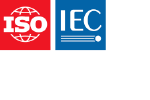Abstract
ISO/IEC 24730-2 is comprised of a main document and two additional parts, ISO/IEC 24730-21 and ISO/IEC 24730-22, and defines a networked location system that provides X-Y coordinates and data telemetry. The system utilizes real-time locating systems (RTLS) transmitters that autonomously generate a direct sequence spread spectrum radio frequency beacon. These devices can be field programmable and support an optional exciter mode that allows modification of the rate of location update and location of the RTLS device. ISO/IEC 24730-2 defines these modes, but does not define the means by which they are accomplished.
ISO/IEC 24730-22:2012 is the mode of ISO/IEC 24730-2 transmitters operating with multiple spread codes and employing a quadrature phase shift keying (QPSK) data encoding and Walsh offset QPSK (WOQPSK) spreading scheme.
General information
-
Status: PublishedPublication date: 2012-06Stage: International Standard confirmed [90.93]
-
Edition: 1Number of pages: 19
-
Technical Committee :ISO/IEC JTC 1/SC 31ICS :35.040.50
- RSS updates
Life cycle
-
Previously
WithdrawnISO/IEC 24730-2:2006
-
Now
Got a question?
Check out our FAQs
Opening hours:
Monday to Friday - 09:00-12:00, 14:00-17:00 (UTC+1)

